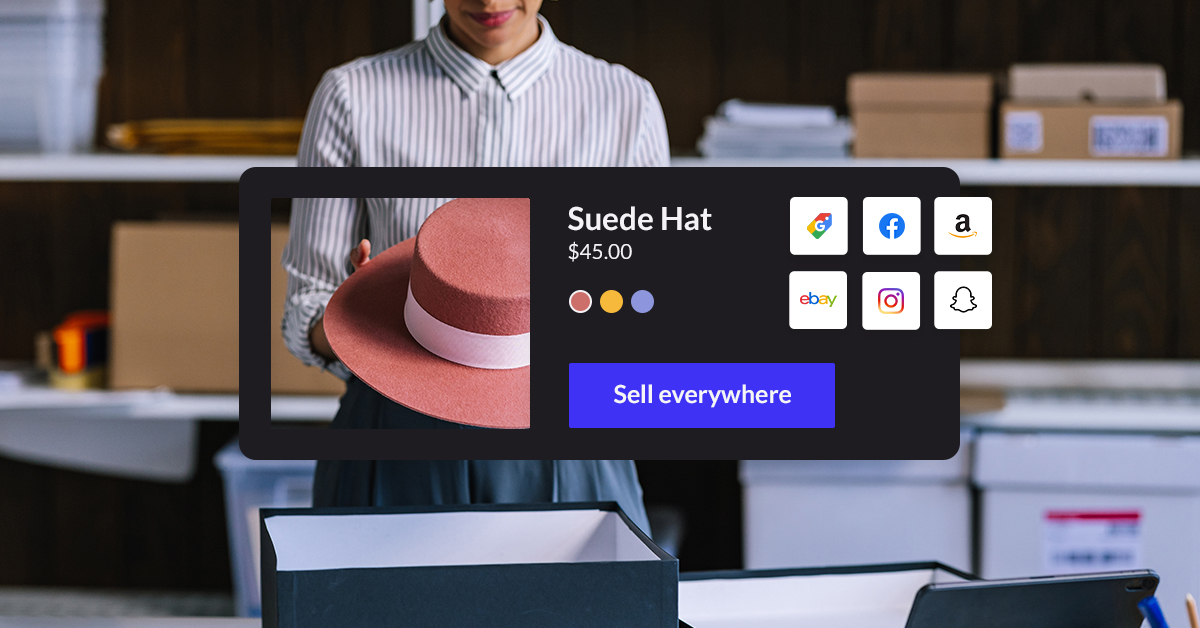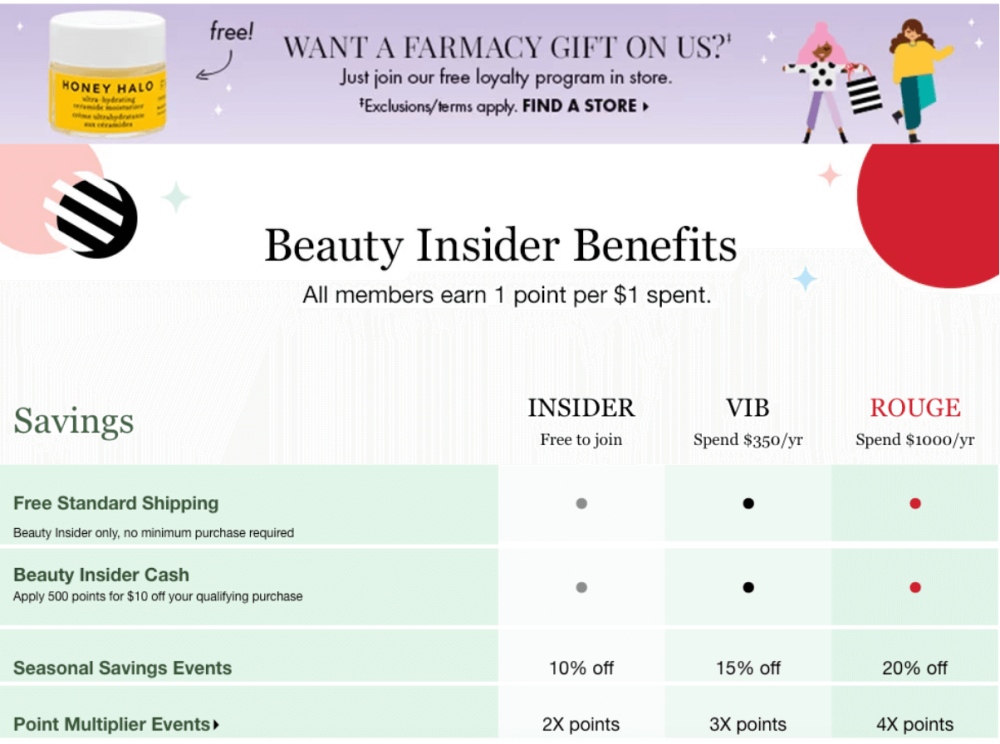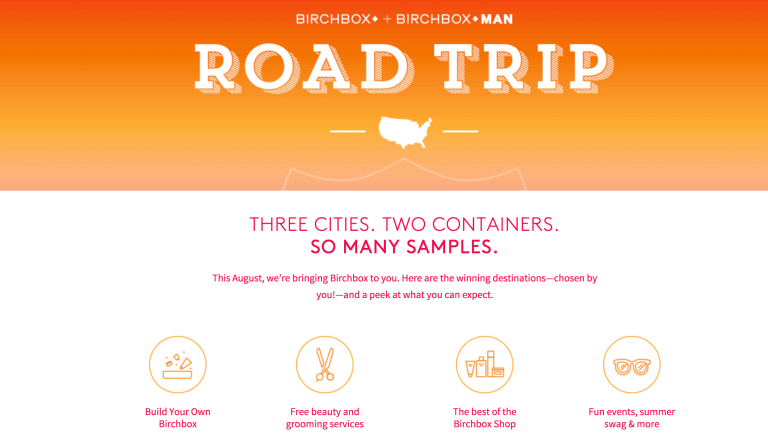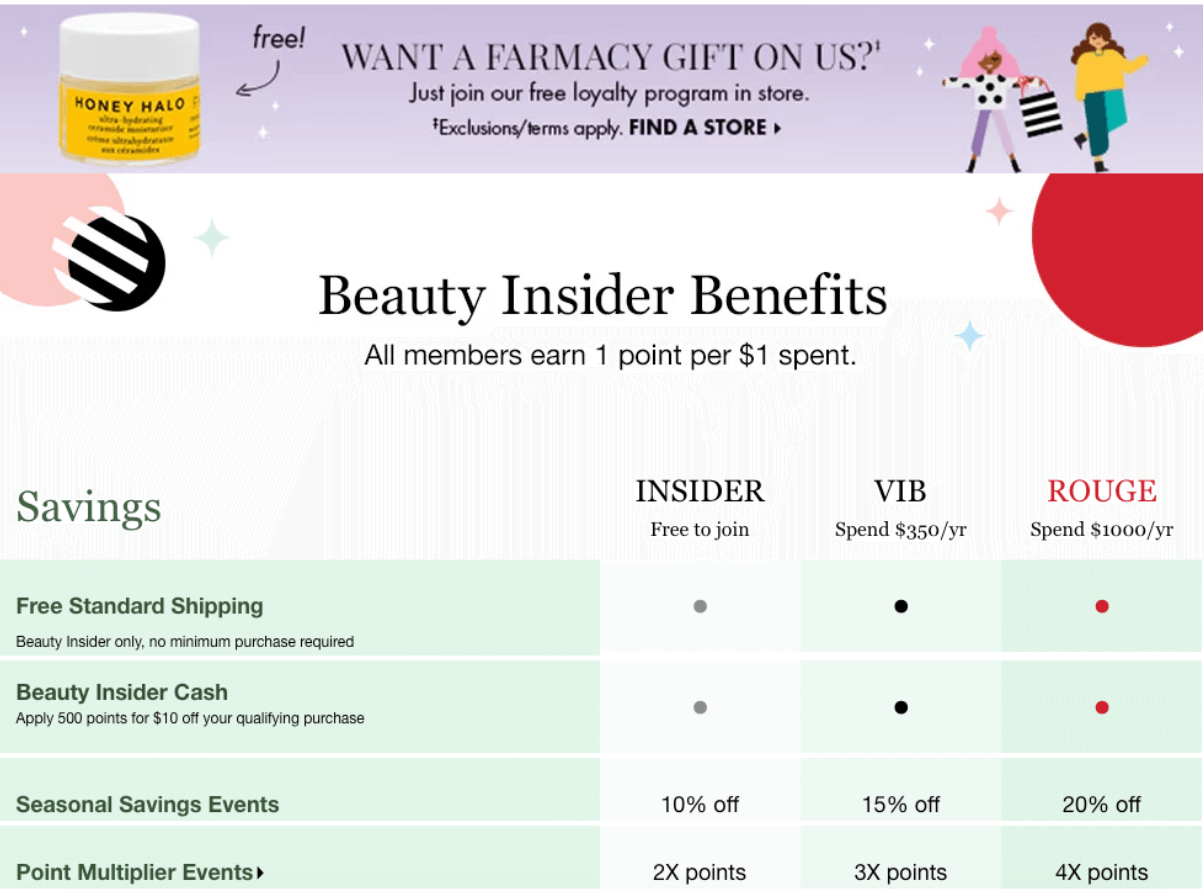
So, your retail business is successful. You’ve reached a place where your company is stable and profitable. With things going well, you might be asking yourself how you can take your business to the next level.
If so, then you’re in the right place. This post explores the various ways that you can expand your retail business. If you’re looking to invest in growth, one (or more) of these options could be right for you.
In this article, we’ll cover 10 strategies for scaling:
- Expand to new locations
- Sell on multiple channels
- Grow your product offerings
- Expand to new markets
- Host pop-up stores
- Partner with other businesses
- Leverage data analytics
- Create loyalty programs
- Consider franchising
- Find your niche
White Paper: Retail Insights & Shopper Sentiment for 2024
Comprehensive report, a survey of 750+ Australian adults, that reveals customers’ shopping preferences and habits, and shares actionable insights for retailers in 2024.
1. Expand to other locations
Opening new stores is a common expansion strategy for many retailers. Setting up shop in other locations will enable you to widen your brand presence offline and reach new customers.
If opening new shops is on your radar, recognize that the success of your multi-store operation will depend on how well you balance two things: your local strategy and the standardized components of your business.
Let’s start with the former.
Your local strategy
Expanding to new locations doesn’t mean creating carbon copies of your original store. While much of your branding and processes may remain the same, you should also inject a local flavor into each shop. This will enable you to connect with local shoppers and gain their business in the process.
An excellent example of a retailer with a strong local strategy is LifeLine Repairs, a chain of 20+ stores offering repair services for electronic devices such as smartphones, tablets and computers.

Kestas Masanauskas, the chief operations officer at LifeLine Repairs, says that their local strategies allowed them to establish a strong presence in each community they serve. Kestas does a lot of research on each location, and he and his team craft clever outreach initiatives to fit each market.
For instance, when they opened a store in Boise, Idaho, the LifeLine Repairs team discovered that the location has an incredibly strong biking community.
So to connect with the market, LifeLine Repairs decided to implement an outreach effort that involved bikes.
“We did an event. The owner and I had an idea of doing free bikes, so we set up eight bikes next to the store, and people could just come and use them. Like, if you’re walking around and you want to have a bike ride, you could come to the store, pick up a bike, then drop it off whenever you can.”
“Now, that type of thing wouldn’t work in a location like downtown Chicago, where we also have a store,” continued Kestas.
The takeaway here? Have a local strategy for each of your stores. When opening additional locations, get to know each new community and tailor your marketing, sales, and customer service to their needs.
Your processes and technologies
While you can (and should) be creative with your local strategies, your core procedures, policies, and technologies must be standardized across all your stores.
Let’s start with the tech side of things. Using the same software and hardware to run your stores will make your business much more manageable. Setup becomes simpler, and it’s easier to train new employees (no matter what store they’re assigned to) when you’re using a centralized system to run your locations.
For example, Lightspeed makes it easy to run all your store locations. When you open a new store, you can copy data from an existing store to speed up the process. Once all your stores are set up, you can easily switch between each back office and replicate workflows across locations to make scaling simple.
2. Expand to other sales channels
Not too keen on opening new stores? Consider diversifying your digital channels, instead.
Have a look at the following options:
Online store
Ecommerce is a no-brainer for retailers today, as consumers continue to gravitate towards online shopping. Fortunately, it’s fairly easy to set up shop online and there are several user-friendly ecommerce platforms in the market today.
Just make sure to integrate your ecommerce site with your POS system so you can centrally manage your business across multiple channels.
Lightspeed retailer Bergstrom Originals did just that. The lifestyle and clothing brand manages in-person operations and has a worldwide presence via their ecommerce site. They needed a better way to manage their stock and juggling their online and offline channels.
By integrating their ecommerce operations with their POS system and offline channels, Bergstrom Originals have been able to centralize their operations.
This kind of situation is ideal if you want to sell online—the more sales channels you have, the more complex your operation can become. You can make it easier by using a unified system that connects all your channels so you can run everything in one place.
Online marketplaces
Other retailers choose to open up additional revenue streams by selling on online marketplaces such as Amazon, eBay and Etsy.
This strategy allows them to tap into a broader customer base and leverage established platforms to increase sales. Additionally, it provides an opportunity to reach international markets and explore diverse customer demographics.
In this way, businesses can diversify their sales channels and mitigate the risks associated with depending on a single revenue channel. This ultimately improves their financial stability and growth potential.
Already got brick-and-mortar and ecommerce covered? Consider expanding to the social media realm as well. If you have a large and engaged social following, it may be worth exploring social selling opportunities.
Have a look at Artisanne Baskets, which regularly showcases its products on Instagram.
The Artisanne team uses the built-in shopping features on Instagram to tag the products in its posts. Users who are interested in learning more can simply tap on the product tag to view it on the retailer’s website.

TikTok
If you cater to Gen Z shoppers and teens, you should also explore TikTok as a sales channel. With millions of highly engaged users all over the world, the platform can help put your merchandise in front of interested shoppers.
They officially launched TikTok Shop in the US last year, making it easier than ever for businesses to sell directly to customers in the app.
TikTok has a lot of power when it comes to consumer purchases. It has over a billion users, with an algorithm that curates exactly what each user wants to see. In the Shop tab, as well as with the livestream feature, users can browse and purchase products directly from sellers in the app. It’s a powerful tool for businesses who are looking to expand their revenue streams.
According to reports, health and beauty businesses make the most sales on TikTok.

3. Grow your product and service offerings
Adding new items or services to your catalog could help you grow your business. A great way to go about this is to think of any related products or services that you can sell. Are shoppers requesting anything in particular? Is there anything they really need, but you aren’t selling yet?
Consider researching market trends when you’re in the process of expanding your product offerings. This will allow you to proactively capitalize on trends (if you do that sort of thing) and stay competitive.
And it goes without saying that you should understand the preferences of your target market when you’re changing your lineup.
You could also look into offering services on top of the products you already offer. Think of ways to help customers make the most out of what you’re selling and see if you can provide those services to them.
4. Expand to other markets
Some retailers are diversifying their products and services even more by venturing into new markets.
One company that successfully pulled this off is Birchbox. The subscription service, which started out by sending female consumers boxes of beauty products, soon expanded its business to tap into the male market.

Source: Sephora
A while back, the company launched Birchbox Man, which delivered personalized assortments of grooming products to their male customers.
Of course, venturing into a new market comes with risks, so before diving into a whole new customer base, do thorough research and test your ideas. It also helps if there is already an existing demand in that particular market.
In Birchbox’s case, the company was getting feedback from people saying that they’d love to get a men’s version of the service. Company co-founder Katia Beauchamp told Racked.com that they had gotten “calls from customers saying the men in their lives were obsessed with Birchbox and wanted something like it.”
From there, Birchbox decided to test the concept by doing “small, limited-edition boxes during the holidays… trying to figure out if men or women would buy them.”
The results gave them the knowledge and confidence that people would actually sign up, and so they moved forward with Birchbox Man.
5. Pop up in other places
If you’re really set on expanding into other geographic markets, but don’t have the funds to set up a full-fledged retail store, consider setting up a pop-up store instead.
In addition to helping you minimize spending (retailers can save up to 80% by opening a pop-up vs. a traditional store), pop-up stores allow you to test the waters in a particular location. By doing so, you can determine whether it’ll be worth it to set up a permanent store.

Birchbox, once again, serves as a great example of this expansion strategy. The beauty subscription services launched Birchbox Road Trip, an initiative that would allow the company to determine where they should open their new locations.
The company invited users to vote on cities where they wanted to see Birchbox, and the winning locations (which ended up being Chicago, Atlanta, and Los Angeles) will get their own Birchbox pop-up stores. The retailer will then gauge the performance of each store to determine where they would set up their next permanent stores.
6. Team up with other businesses
![]()
A good way to go about your expansion (whether it’s expanding to a new market or offering new products or services), is to leverage the assets of other businesses. You can do this by partnering with a company in the market you want to target.
The main advantage of this strategy is the fact the business you team up with will already have the assets and resources required to win the market that you’re targeting.
For example, if you want to expand your women’s fashion line to menswear, you can partner or acquire an existing male fashion business instead of developing new products from scratch. Or, if you’re looking to expand by providing new services, then why not look for a company that’s already offering that service and go from there?
A team-up example
IKEA did just that when it bought TaskRabbit, a marketplace that connects consumers with service providers. Then months after the acquisition, IKEA started offering furniture assembly service in the US for—you guessed it—TaskRabbit.
Rather than setting up the logistics and infrastructure required to offer furniture assembly services, IKEA purchased TaskRabbit, a company that already had services figured out. As a result, IKEA was able to roll out furniture services much more efficiently.
Not every business can afford to just acquire other companies, but there’s still a great lesson to be learned here. If it makes sense for your company, collaborate with a third party who can help make your expansion goals a reality. Find a partner then come up with a win-win agreement that will help you both add value to your customers’ lives.
7. Leverage data to make high-level decisions
Data is a powerful tool that empowers you with the ability to make decisions that contribute to the growth of your retail business.
Data and analytic tools give you a thorough understanding of your business’s finances, sales and inventory as well as your customers and employees.
The important thing is that you have the right tools to get the insights you need. A POS and payments system like Lightspeed Retail can change the way you run your business with features like Advanced Reporting.

If the system you use lacks these capabilities, you’re losing out on valuable information that can help boost your profits.
Detroit gift shop City Bird, which has used Lightspeed for over a decade, makes good use of the system’s extensive reporting capabilities.
“We love the powerful reporting in Lightspeed. There are so many ways to drill down on data. You can look at sales by hour. You can use tags, you can use products, vendors, brands. It’s helped us uncover trends, uncover issues and figure out new ways to grow and expand the business,” says co-founder Andy Linn.
You can also use tools like Google Analytics and Google Trends to gather data.
Let’s get into some of the ways you can utilize data to grow your business.
Customer segmentation
Using customer data, you can segment your shoppers based on purchase history and relevant demographics. You can then tailor your marketing strategies for each segment through personalized deals and product offerings, which can boost your engagement.
Targeted advertising
You can create ads based on customer preferences and behavior, leading to higher conversion rates and customer loyalty.
Optimize inventory
With inventory data, you can easily track your stock levels and appropriately forecast inventory. Seeing in real-time products that sell well and those that don’t is super valuable–and you may even be surprised at what you learn. Ultimately, it’ll help you make smart ordering decisions, allowing you to maximize profit by prioritizing popular inventory and discounting unpopular items.
Measure sales targets
With hourly sales data, you can track peak sales periods for your in-store operations. This way, you can adjust your opening hours and schedule employees accordingly.
8. Implement a loyalty program
By strategically promoting a well-designed loyalty program, retailers can hold on to existing customers and attract new ones, which contributes to sustained business growth.
Encourage repeat business
These programs are designed to reward and retain existing shoppers. You can incentivize your current customers with discounts, exclusive access and offers and points for each purchase. All of these strategies encourage repeat business.
Increase customer spend
Many of the most successful loyalty programs reward customers based on how much they spend. As customers accumulate points or reach new tiers, they’ll be incentivized to spend more to achieve higher reward levels. That can lead to an increase in ATV (average transaction value).
Boost referrals
Referral programs can attract new customers. Offer existing customers rewards or discounts for referring friends and family. This is a simple and effective way to increase your reach through word-of-mouth marketing.
Run your program across channels
Your loyalty program should operate the same way on every channel you sell on, both online and off. This gives customers a consistent experience, allowing them to earn and redeem rewards no matter the channel.
Overall, a strong loyalty program can do a lot of heavy lifting when it comes to attracting and retaining customers.Sephora is a brand with a popular loyalty program. Shoppers with accounts collect points on every purchase and can redeem points and items through their Beauty Insider program, which has three tiers. When you collect more points, you’ll move up in your membership level and gain access to better offers and sales.

Source: Sephora
9. Franchise your business
Despite what you might think, franchising isn’t just for big corporations. A business of any size can turn into a franchise. Although this may not be the first option you think of when it comes to growing your retail business, it could be worth it for some.
So what is franchising? It’s a business model that involves the owner of a company (called the franchisor) granting the rights of their business to others (franchisees) to operate it under the franchisor’s established business name and system. You can probably think of many franchises off the top of your head–Tim Hortons, Planet Fitness, 7-Eleven and many, many others.
To franchise a business, you have to have a pre-established brand and a successful business model. Remember that franchisees are investing in your brand.
There are plenty of steps involved in franchising your business, including but not limited to:
- Legal and regulatory compliance
- Documenting operations
- Developing a franchisee offer
- Creating franchisee training programs
- Establishing a support system
- Extensive financial planning
- Documentation to ensure brand consistency
According to Sherry McNeill, who spoke to the Business Development Bank of Canada in an article on franchising, there are five factors to consider for becoming a franchisor:
- Make sure you have the right advisors, experts and planners around you to help assess your options
- Assess the strength of your company’s financial performance
- Determine whether you have a replicable business model
- Determine the scalability of your business model
- Decide whether you can handle a major change in your role (moving away from running the day-to-day operations of your business)
Franchising your business can bring about major changes for you both financially and operationally. If successful, your business would scale significantly.
10. Tap into different niches
By tapping into different niches, you’re selling to more customers, in turn increasing your profits.
Expanding your retail business into niche markets involves targeting and catering to specific, well-defined segments of the market with unique needs and preferences.
As a jumping off point, identify the niche markets you think your business could tap into. Conduct market research to identify these markets and their customers. Don’t forget brand alignment–the markets you cater to have to make sense for your business. Pinpoint profitable opportunities by analyzing the data to identify gaps in your chosen niche.
Once you’ve done that, develop a deep understanding of the customer base in your chosen niche. From there you can tailor products, services and marketing strategies to address the specific challenges and desires of your target market.
Tips on entering new niches organically
Depending on how much you plan to invest in catering to a specific niche, you can even create specialized product offerings and personalized marketing campaigns. Collaborating with brands that already occupy these niche spaces is also a great way to segue into niche markets. It’s mutually beneficial–you both get to reach a wider audience.
Don’t forget that most consumers can tell when they’re just being “sold” to by a brand. It’s important to develop your brand identity so that people understand why your brand would occupy that niche space. You should align with the values of both the market and consumers.
Take the time to build a strong brand identity that actually resonates with the targeted demographic. Related to this is engaging in niche communities, such as on social media, in forums and events related to the market. That way, you can build relationships and trust.
An example of a big brand tapping into smaller niches is Coca-Cola. Sure, they’re a globally recognized brand with mass-market appeal, but they’ve tapped into niche markets by diversifying their product offerings. They adapt to specific consumer preferences in different regions, inspired by regional preferences.
Grow your retail business
Ultimately, there are many ways you can grow your sales and expand your customer base.
If you’re looking for the right technology to help you achieve your retail expansion goals, reach out to a Lightspeed Retail expert today.
FAQ
1. What is retail expansion?
Retail expansion is the process of growing a retail business by increasing its presence, reach and market share through various methods. These include opening new locations, entering new markets or diversifying product offerings.
2. What are the four retail market expansion strategies?
The four retail market expansion strategies include market penetration (increasing sales in existing markets), market development (entering new markets), product development (introducing new products), and diversification (expanding into new product and market combinations).
3. How do you expand sales to existing customers?
To expand sales to existing customers, retailers can implement strategies such as personalized marketing, loyalty programs, upselling, cross-selling and providing exceptional customer service to encourage repeat business.
4. How do you stand out in retail?
To stand out in retail, businesses can focus on unique value propositions, exceptional customer service, personalized shopping experiences, effective branding, and innovative marketing strategies that differentiate them from competitors.
5. What are the three forms of expansion selling?
The three forms of expansion selling are upselling (encouraging customers to purchase a higher-end product), cross-selling (suggesting complementary products), and bundling (offering products or services as a package).
6. What happens during a business expansion?
During a business expansion, a company typically opens new locations or enters new markets. They may also increase production capacity, hire additional staff, and implement strategies to capture a larger share of the market.
7. What is expansion vs. upsell vs. cross-sell?
Expansion involves growing a business overall, while upsell focuses on encouraging customers to buy a more expensive version of a product. Cross-sell involves suggesting complementary products or services to enhance the customer’s purchase.

News you care about. Tips you can use.
Everything your business needs to grow, delivered straight to your inbox.




